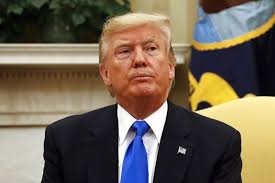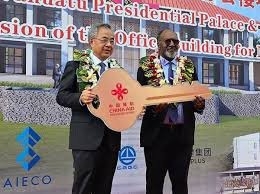China Builds New Presidential Palace in Vanuatu
China has recently undertaken a significant infrastructural project in Vanuatu by constructing a new presidential palace, marking a notable development in the geopolitical landscape of the Pacific region. This initiative, aimed at enhancing diplomatic ties and influence, underscores China’s strategic interests in the Pacific islands.
The construction of the presidential palace in Vanuatu, financed and built by Chinese companies, reflects China’s broader economic and diplomatic strategy known as “debt-trap diplomacy,” where financial assistance is leveraged for strategic gains. The project has sparked international attention and raised concerns about the growing influence of China in the Pacific, traditionally considered within the sphere of influence of Australia and New Zealand.

Why this News is Important
The development of a new presidential palace in Vanuatu by China holds significant implications for several reasons.
Strategic Diplomatic Influence
China’s investment in infrastructure, such as the presidential palace, is part of its larger strategy to expand influence in the Pacific region. By establishing such a prominent presence in Vanuatu, China aims to strengthen diplomatic ties and potentially sway political decisions in its favor.
Economic Implications
The financing of this project through Chinese loans highlights concerns over debt sustainability for small island nations like Vanuatu. The terms of such loans and their implications on national sovereignty and economic independence are critical considerations for global economic stakeholders.
Historical Context
The history of Chinese involvement in the Pacific dates back to its “Pacific Island Countries (PICs) diplomacy” initiative, launched in the early 2000s. This initiative aimed to enhance China’s relations with Pacific island nations through economic aid, infrastructure projects, and diplomatic engagement. The construction of the presidential palace in Vanuatu is a continuation of China’s strategic investments in the region, illustrating its long-term geopolitical ambitions.
5 Key Takeaways from “China Builds New Presidential Palace in Vanuatu”
| Serial Number | Key Takeaway |
|---|---|
| 1. | China is constructing a new presidential palace in Vanuatu, highlighting its expanding influence in the Pacific region. |
| 2. | The project is financed and built by Chinese companies, raising concerns about debt-trap diplomacy and economic dependency. |
| 3. | This development underscores China’s strategic efforts to strengthen diplomatic ties and geopolitical influence in the Pacific islands. |
| 4. | It signals a shift in the traditional geopolitical dynamics of the Pacific, traditionally dominated by Australia and New Zealand. |
| 5. | The initiative has sparked international scrutiny and debate over China’s growing global influence and its implications for regional stability. |
Important FAQs for Students from this News
1. What is the significance of China building a presidential palace in Vanuatu?
- China’s construction of a presidential palace in Vanuatu signifies its expanding influence in the Pacific region, potentially altering traditional geopolitical dynamics.
2. Why is there concern over debt-trap diplomacy in relation to this project?
- The project is financed through Chinese loans, raising concerns about debt sustainability and economic dependency for Vanuatu.
3. How does this development impact regional politics in the Pacific?
- It marks a strategic move by China to strengthen diplomatic ties and influence political decisions in a region traditionally dominated by Australia and New Zealand.
4. What are the broader implications of China’s infrastructure projects in the Pacific islands?
- China’s investments in infrastructure could reshape economic and political landscapes, influencing global strategic alignments.
5. How has the international community responded to China’s initiatives in Vanuatu?
- The project has sparked international scrutiny and debate over China’s global influence and its implications for regional stability.
Some Important Current Affairs Links














